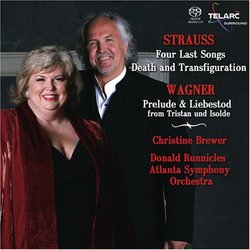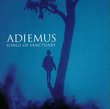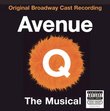| All Artists: Richard [1] Strauss, Richard [Classical] Wagner, Donald Runnicles, Atlanta Symphony Orchestra, Christine Brewer Title: Strauss: Four Last Songs; Death and Transfiguration; Wagner: Prelude & Liebestod from Tristan & Isolde [Hybrid SACD Members Wishing: 0 Total Copies: 0 Label: Telarc Release Date: 8/15/2006 Album Type: Super Audio CD - DSD Genres: Pop, Classical Styles: Vocal Pop, Opera & Classical Vocal, Forms & Genres, Theatrical, Incidental & Program Music Number of Discs: 1 SwapaCD Credits: 1 UPC: 089408066160 |
Search - Richard [1] Strauss, Richard [Classical] Wagner, Donald Runnicles :: Strauss: Four Last Songs; Death and Transfiguration; Wagner: Prelude & Liebestod from Tristan & Isolde [Hybrid SACD
CD DetailsSimilarly Requested CDs |
CD ReviewsRunnicles, ASO, Wagner & Strauss: Operatic Drama & Color Dan Fee | Berkeley, CA USA | 08/26/2006 (5 out of 5 stars) "Many times a shopper cannot make too much out of the program sequence on a particular CD/SACD - marketing departments throw things together without an informed view of the music. In this case, however, there is a uniting theme that lifts you up and carries the listener right through to the end of the program. Wagner comes first, via the familiar excerpts from Tristan&Isolde - Prelude plus Liebestod. Then we get an early Strauss tone poem, written precociously if expertly when that composer was about 25, and the concert concludes with the very last things Strauss wrote - the Four Last Songs. The implicit theme, then, must be how Richard Strauss walked through the many doors that Richard Wagner opened, particularly letting the orchestra be the most consistent of the operatic characters on stage. It is daring to begin with the Tristan Prelude & Liebestod sequence, if only because this is so orgasmic and culminatory in its essence that one cannot help wondering where else the program can go once it has summed up love, death, and eternity. True to its place in the overall program, this performance of the Tristan excerpts is a start, instead of a finish. That means that Runnicles and ASO are not pushing the big finalities of the music so much as letting it sing and lift and open, exquisitely, warmly. For listeners more used to the grand, end-of-an-era approach to Tristan (and Wagner in general), this shift in interpretation might take some getting used to. There is much more introspective song and warmth here (a la Schubert, Schumann, Wolf) than the big, grand push typically reveals. The fact is, as we who are now alive know only too well, Wagner was not the end - not even of his era entire - but a summation in his way of a heritage, a summation like J.S. Bach was a summation. (We have yet to fall completely in love with the Bach sons who carried that old new music after papa throughout Europe and helped lay foundations for Haydn and Mozart, Schubert and Beethoven, and yes, even the Late High Romantics we are hearing on this CD/SACD disc.) From its first notes, the Tristan Prelude is a doing, not an undoing. The ASO is yearning. The Late Romantic harmonies in this prelude are always leaving home for little journeys where the journeys are the destinations. But none of this is exactly desperate or suicidal. The era may indeed be wrapping up, but humanity is not doomed because it has dared to love against all the dying West's rules and mores. Isolde doesn't even sing until the latter part, and by that time the orchestra's prelude has made it quite plain that death and eternity are part of the Great Scheme of Things, like Love. This reminds a listener of Nietzsche's famous phrase, Alle lust will tiefe, tiefe ewigkeit. (All desire yearns for eternity.) But there is something matter of fact, given, about this knowledge - it is not necessarily a High, Late Romantic Hysteria, but simply a piercing, trenchant observation upon human embodiment or the human condition. We know our boundaries or limits as a starting place, not as an end of everything. The ASO achieves no mean feat by setting this all out in its prelude, so that by the time Christine Brewer actually starts to sing, ever so softly, in a lyrical whisper that is more self-musing than deathly drama - we know we are dying, having lived and having loved. We know that others will live and love after us. Now if you are nothing but died in the wool, old school - you will probably find this Tristan style lacking. With Strauss to follow here, however, it makes a surprisingly apt concert beginning. If you can at all bear to hear something besides the traditional grand manner in this music, then keep listening. The early Strauss tone poem, Death and Transfiguration, is played as a special piece of opera. Like a one act, self-contained, but more than the sum of its verismo parts. Its musical argument is based on characters, drama, narrative moments, and a finale. The composer dazzles by unleashing depth and color in the orchestra, hardly known to this stunning degree outside Berlioz or Rimsky-Korsakov. You will probably suddenly recall that the youthful Stravinsky ballets are waiting in the wings of near impending music history, just ten or twenty or thirty years down the road. You will realize that Mahler is alive, unrecognized, except among the cognoscenti, students, and illuminati. One can have nothing but praise for the ASO strings, woodwinds, and brass. Captured in healthy five-channel surround sound, they acquit themselves beautifully. The hall gathers the sound and lets it bloom, so one lusciously hears a large Late Romantic orchestra being deployed with all the intimacies of a chamber group. Runnicles sets tempos that are flowing and flexible, but not swooning and drooping like surrealist clocks in paintings by Salvador Dali. Now to the Four Last Songs. A glance at the fav shelf quickly reminds me that I already cherish: Norman, Schwarzkopf, Janowitz, Te Kanawa, Isokowski. What about Christine Brewer? She obviously has a major, dramatic soprano voice. But she isn't vocally besides herself with being a diva in nothing but the Verdian grand opera manner. Brewer unfailingly enters into each of these glowing, autumnal songs as high points in the great western Lieder tradition. If the orchestra reminds one that Mahler and Stravinsky are both alive, Brewer's singing of these four last songs reminds one that Hugo Wolf is still writing, and that figures like Ned Rorem will soon arrive. As in the Wagner, so now in this final Straussian effort: We are Staying On After. Retrospect, Farewell, Saying thanks and goodbye - all can be acknowledged as part of the journey. Sincere, deep feeling is not necessarily over-wrought. Vocal heft does not preclude intimacy, subtlety. One thousand words? Bravo Telarc. Start listening. This SACD belongs. Show off. Play it just to hear it." Magnificent recording Dennis Brandt | Red Lion, PA United States | 06/18/2007 (5 out of 5 stars) "The previous reviewer said it well enough. My only complaint with this recording is that the Liebenstod is not a separate track so I could just play it sometimes without fast-forwarding through the Prelude to Act I. And I had forgotten how lovely the Four Last Songs were. After this recording, I don't need reminded anymore." Very good performances marred by reverberation pm444 | Okemos, MI USA | 04/25/2010 (3 out of 5 stars) "The performances on the entire CD are of the highest quality, and the multi-channel SACD recording beautifully captures both the orchestral and vocal details. However, as other reviewers have noted, there is a very audible and noticeable reverberation around Ms. Brewer's otherwise flawless voice. The best way I can describe it is to compare it to what you might hear if you listened to a CD of similar material, using a receiver with pre-programmed soundfields. The reverberation here sounds like what they'd probably call "concert hall", where a slight echo is added in an attempt to mimic the acoustics of an auditorium. This can be a legitimate way to enhance the sound of a particularly dry or flat CD, but this recording does not suffer from either of those deficiencies.
I have no idea if the reverberation was a result of the venue where it was recorded, or if it was added by the engineers. However, the reverberation is less apparent on the stereo SACD layer, which leads me to believe it was added, and if that's the case, it was an unfortunate decision. I found that after listening for a while, I did become somewhat accustomed to it, but it's completely unnecessary, especially with an SACD. The orchestra sounds completely natural, which makes the reverberation around the voice stand out even more. While it doesn't destroy the listener's ability to enjoy an otherwise excellent recording, it certainly doesn't add anything. I can't say that I regret purchasing the disc, but it's probably not one that I'll be pulling off the shelf very often." |





